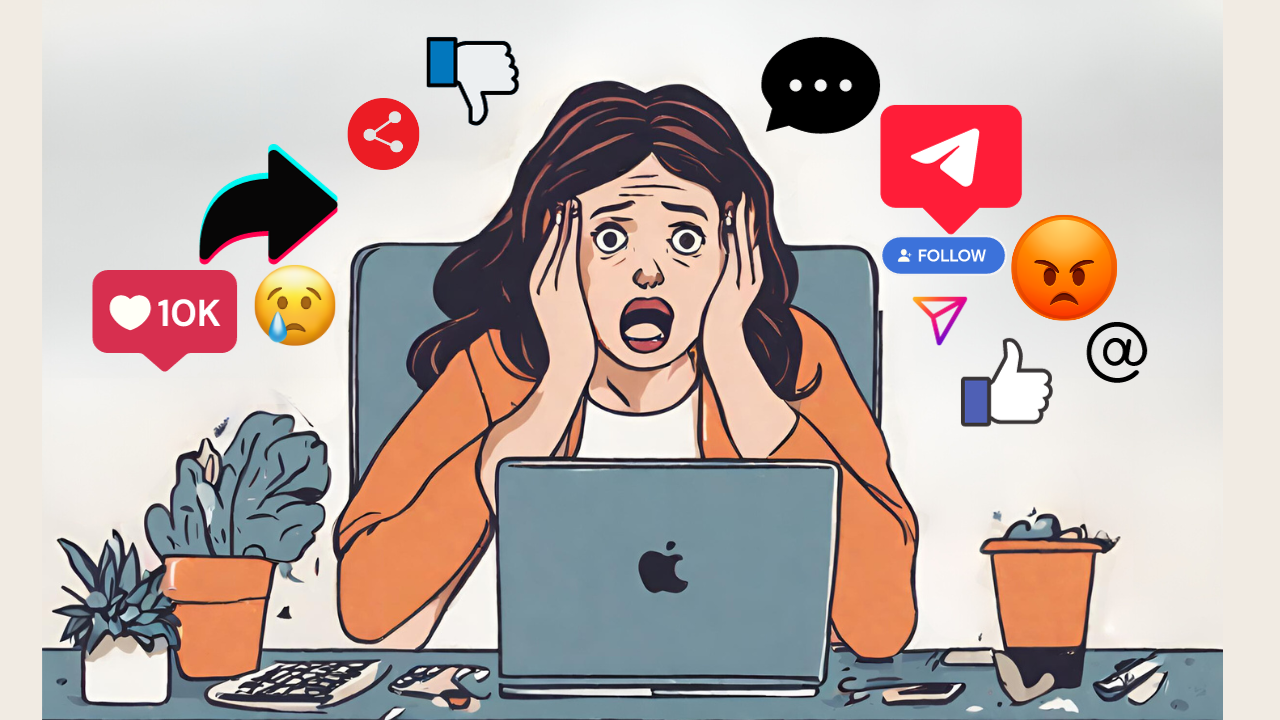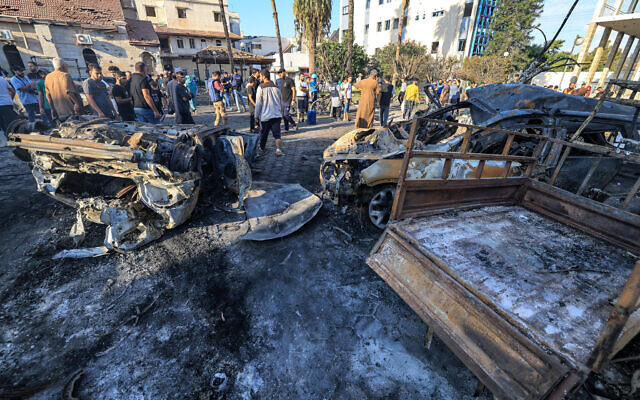









During times of crisis, social media becomes a powerful tool for sharing information and shaping narratives. However, concerns arise about the control of information and ownership of social media companies [2f7d27ba]. The example of the al-Ahli Arab Hospital bombing in Gaza highlights how vulnerable topics can be manipulated through the use of bots and influencers. The New York Times' coverage of the incident resulted in Twitter removing the newspaper's verification badge, raising questions about the influence of social media companies on the narrative [2f7d27ba].
To combat the spread of misinformation on social media, organizations like Bellingcat provide valuable tips on how to critically evaluate sources and debunk false information [70971c23]. They emphasize the importance of verifying claims by geolocating viral videos, identifying recycled footage, and checking the credibility of sources [70971c23]. Bellingcat also highlights the use of manipulated or fake imagery during conflicts and encourages individuals to report suspicious footage to trusted news sources [70971c23].
In the realm of corporate social responsibility and sustainability, platforms like 3BL Media News play a crucial role in providing news and information [7bbb7cf1]. They cover a wide range of topics, including sustainable business practices, environmental conservation, social justice, and ethical investing [7bbb7cf1]. The website serves as a valuable resource for individuals and organizations interested in staying informed about the efforts being made to build a more sustainable and responsible world [7bbb7cf1].
Chinese platforms have the potential to reshape business globally as preferred social media, e-commerce, and logistics platforms [6493873f]. Best practices for social media governance can help mitigate risks [6493873f]. A financial technology company successfully detected an online active shooter threat [6493873f]. A survey shows that most Americans were exposed to hateful or inflammatory content on social media after a terrorist attack [6493873f]. By 2033, corporate security will have access to innovative tools and strategies [6493873f].
Health misinformation continues to spread on social media and in real life, with vaccines being the No. 1 topic of misleading health claims [9242f2c8]. Beliefs in vaccine myths have resulted in preventable deaths and economic losses. The spread of health misinformation is fueled by declining trust in science and government, as well as the way social media algorithms curate content [9242f2c8]. Steps to identify and prevent health misinformation include checking the source, examining author credentials, paying attention to the date, cross-referencing information, questioning sensational claims, weighing scientific evidence over anecdotes, and consulting healthcare professionals [9242f2c8].
The influence of social media on information control and ownership extends beyond the spread of misinformation. An opinion piece in The Capital Times discusses how moneyed interests manipulate social media to divide people and influence politics [f0158962]. The article highlights a three-step process that includes diminishing the middle class, changing election laws to favor billionaires, and using technology to manipulate information. The author argues that the combination of radical politics and advanced technology has led to the spread of extremist ideas and the erosion of democracy. The article also mentions the control of information by big tech companies and the negative impact of constant exposure to hate and fear. It concludes by emphasizing the importance of hope, truth, and the role of social media in shaping public beliefs [f0158962].
In South Africa, the Independent Electoral Commission (IEC) has released digital and social media principles and guidelines to counter the spread of fake news during elections [0c35e2b0]. The IEC aims to guide Electoral Management Bodies (EMBs) and other electoral stakeholders in identifying opportunities to promote access to electoral information and address harmful digital content. The guidelines define misinformation as false, inaccurate, or misleading information disseminated regardless of intent, while disinformation refers to false, inaccurate, or misleading information intentionally designed to cause public harm or for profit. The guidelines aim to address the normative gap regarding the use and implications of digital and social media in elections. The IEC highlights the risks posed by social media, citing instances worldwide where it has been exploited to undermine EMBs' work. The guidelines are non-binding and meant to protect electoral integrity [0c35e2b0].
The World Economic Forum's 2024 Global Risk Report highlights the rising threat of misinformation and disinformation in the context of upcoming elections across various economies, including Bangladesh, India, Indonesia, Mexico, Pakistan, the United Kingdom, and the United States [f7b32860]. The report emphasizes the potential for misinformation and disinformation to destabilize electoral processes globally, ranking them as the top threats. India's susceptibility to misinformation was evident during the 2019 elections, where political parties strategically used platforms like WhatsApp and Facebook. The report's findings, based on the perspectives of 1,490 experts, stress the need for effective strategies against this growing threat. Additionally, the report highlights economic challenges, such as the cost-of-living crisis and inflation, as significant risks over the next two years. It also warns of the potential for a digital gap between high- and low-income countries if commercial incentives and geopolitical imperatives drive the development of artificial intelligence and other frontier technologies. The convergence of technological advancements and geopolitical dynamics may further exacerbate inequalities across advanced and developing economies.
A new report by S&P Global Ratings advises banks to consider social media in their liquidity risk management activities [940fd374]. Bank failures in 2023, such as the collapse of Silicon Valley Bank, were often characterized by substantial and rapid deposit outflows exacerbated by negative social media. Social media activity, regardless of its veracity, can quickly expose weaknesses in a vulnerable bank by eroding client confidence and accelerating deposit outflows. S&P Global Ratings distinguishes the threats posed by both open platforms and platforms dominated by private groups. The report notes that interest rate hikes have increased the volatility of deposits, and social media could further complicate banks' deposit management by accelerating the dissemination of information. Regulators in some jurisdictions could update liquidity rules to better capture the risk of deposit flight, notably on uninsured deposits and deposits deemed slippery due to digital banking [940fd374].
Memes are identified as a threat to the US financial system in a report by the RAND Corporation. The report highlights four potential threats to the financial system: attacks on AI-enabled financial trading models, bond dumping by foreign holders of US debt, using deepfakes to spread misinformation, and memetic engineering to manipulate beliefs and behaviors [eadb1757]. Memetic engineering involves designing viral ideas or culture (memes) to achieve a specific outcome. Memes can be weaponized to carry out memetic engineering attacks that manipulate beliefs and behaviors, gradually undermining trust in financial markets and institutions. The RAND report suggests that the longer-term degradation of confidence in institutions is the most significant threat. Memetic engineering can tap into human tribalism, emotions, cognitive biases, and identity to potentially manipulate behavior or beliefs. The report also questions whether authoritative sources and institutions use memetic engineering tactics to shape narratives and divide people. The report concludes that memes have the power to shift perspectives and challenge official narratives, which worries defense and intelligence agencies. The RAND authors equate the erosion of confidence caused by memetic engineering to a 'financial climate change' narrative. They warn that disinformation or misinformation could diminish public trust in markets, complicating the distinction between reality and fabrication and escalating market volatility. The report suggests that memes can tap into human tribalism, emotions, cognitive biases, and identity to manipulate behavior or beliefs. The article raises the question of whether governments and institutions also use memetic engineering tactics. The government's concern is that memes will undermine trust in financial institutions rather than the actions of those institutions themselves [eadb1757].